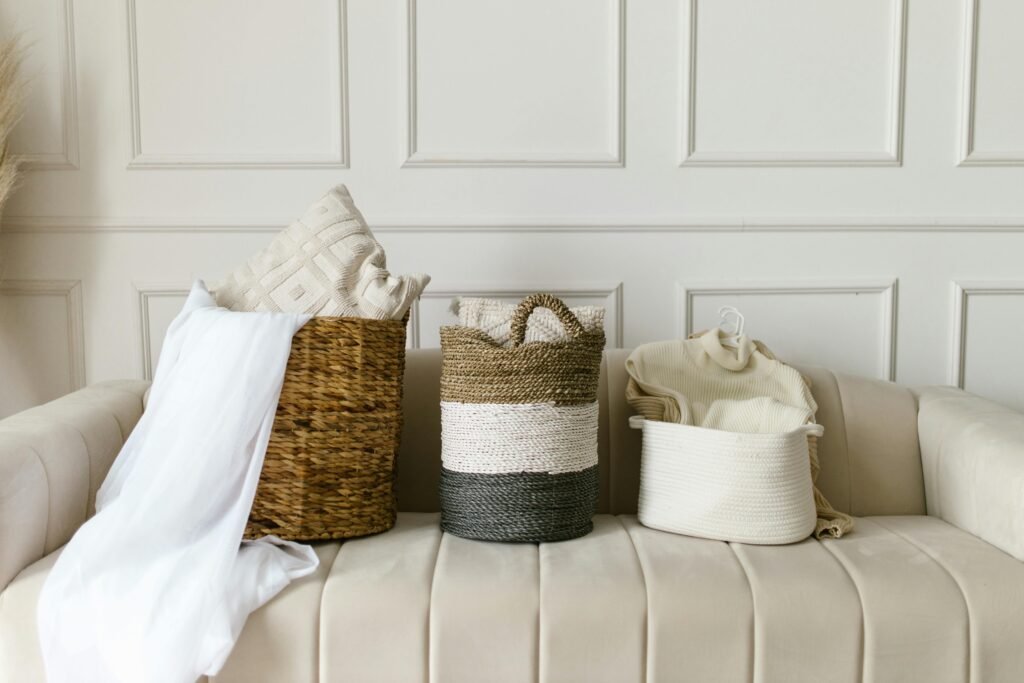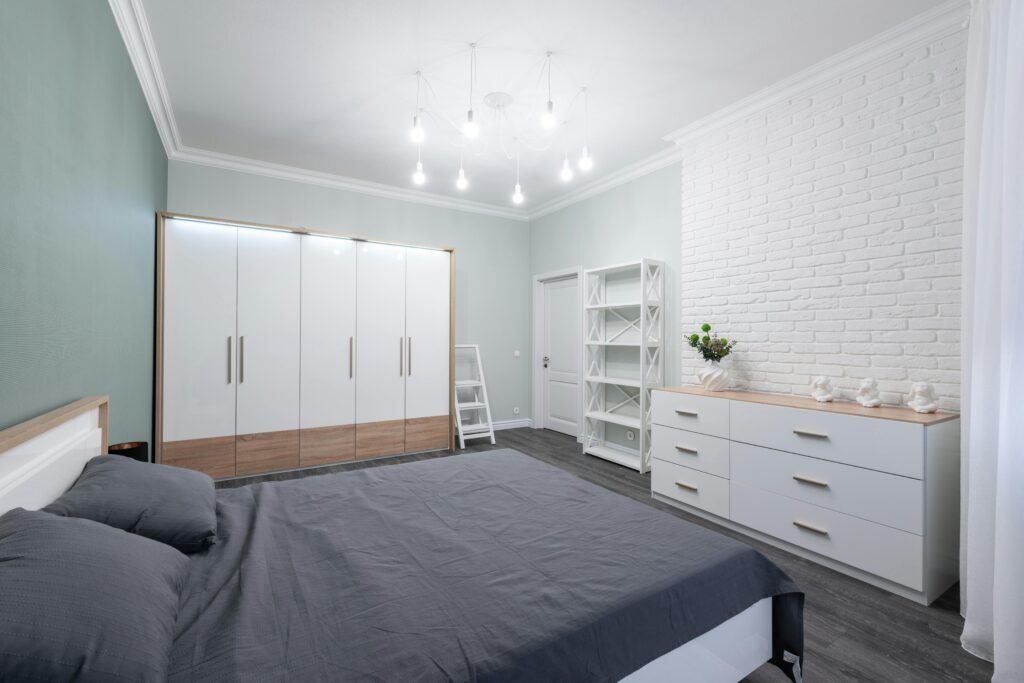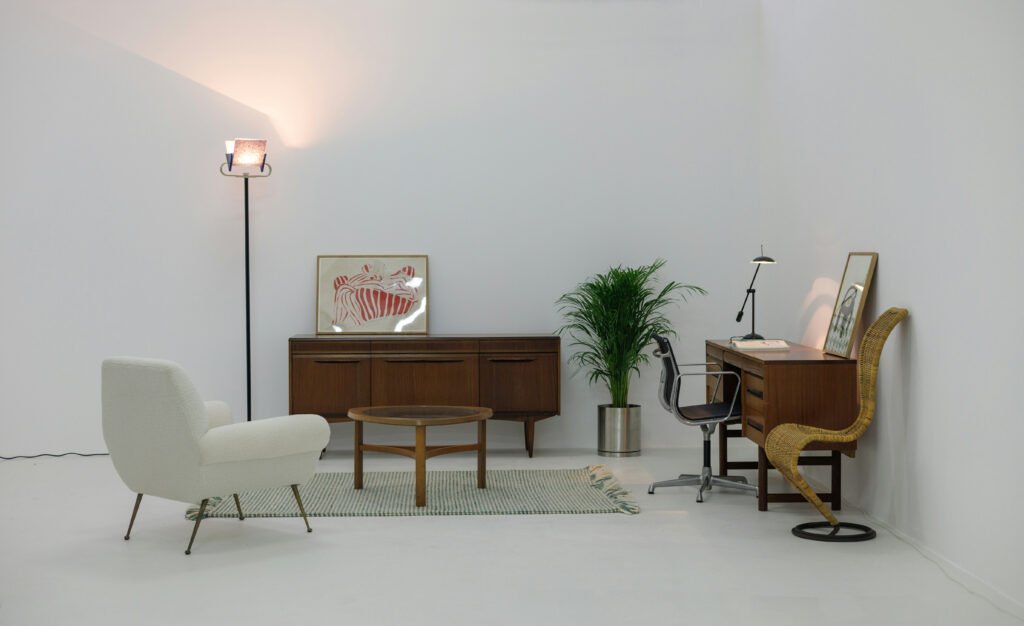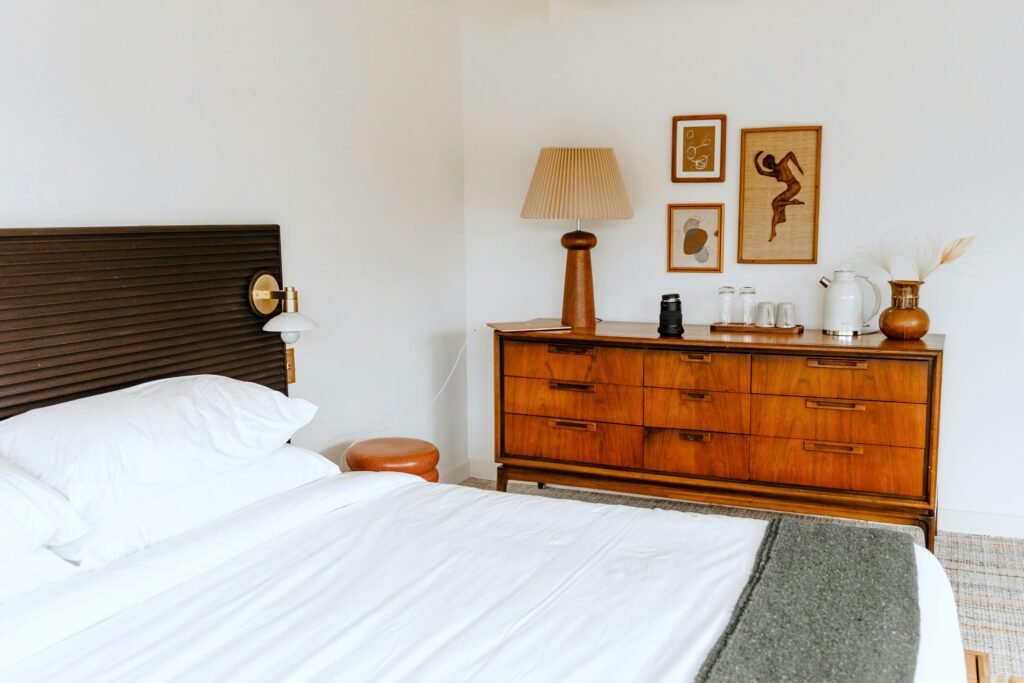If you buy through links on this page, we may earn an affiliate commission at no extra cost to you.
A tidy home, a lighter footprint
If 2025 has a design mantra, it’s this: declutter beautifully, and do it sustainably. Storage baskets are no longer an afterthought you hide in a closet; they’re front-and-center décor that keep daily life organized while signaling your values. The challenge? Not all “green” baskets are created equal. Some are sturdy but synthetic. Others are natural but flimsy, or produced in ways that raise questions.
After months of hands-on testing and interviewing homeowners, renters, and professional organizers, our pick for the top-rated eco-friendly storage basket in 2025 is a hand-woven seagrass lidded basket with recycled-cotton lining (widely available from reputable makers). It balances sustainability credentials with durability, thoughtful details, and quietly elegant design that works in living rooms, nurseries, closets, and entryways.
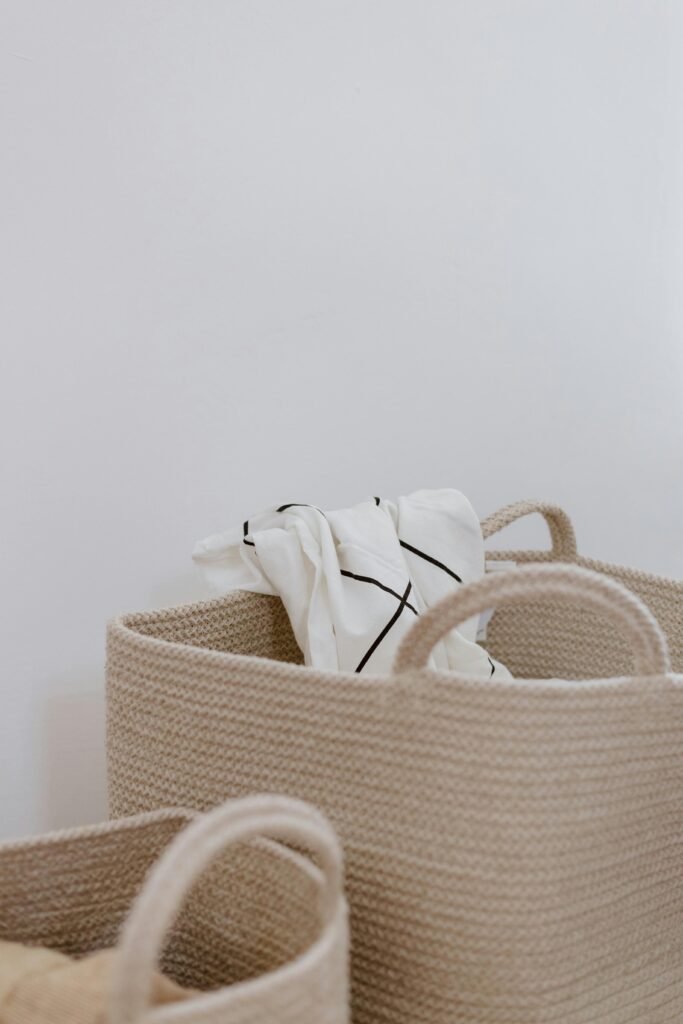
Why this basket is our top pick
1) Materials that make sense
Seagrass is a rapidly renewable natural fiber that’s harvested with low environmental impact. When paired with a recycled-cotton lining, you get a basket that’s both breathable and kind to delicate items (sweaters, baby clothes) without shedding microplastics. The lining is removable and machine-washable—key for long-term use.
2) Built to last (and actually carry stuff)
Cheap baskets often look great for a month, then warp or fray. The best 2025 models we tested use a tight, uniform weave with reinforced rims and integrated handles. They maintain shape under load (think: a stack of hardcovers or a pile of winter throws) and don’t develop wobbly bottoms. If you’ve ever slid a basket across a shelf and watched it slouch, you’ll appreciate the difference.
3) Practical details that reduce clutter
The low-profile lid hides mess without adding bulk. The recycled-cotton lining prevents snags on knits and can be removed for a quick wash. Several sizes nest neatly, so you can scale storage without visual noise.
4) Design that goes anywhere
The matte, natural tone and subtle texture fit modern, coastal, Scandinavian, farmhouse, and transitional rooms. In small apartments, a pair of medium baskets under a bench looks deliberate, not improvised.
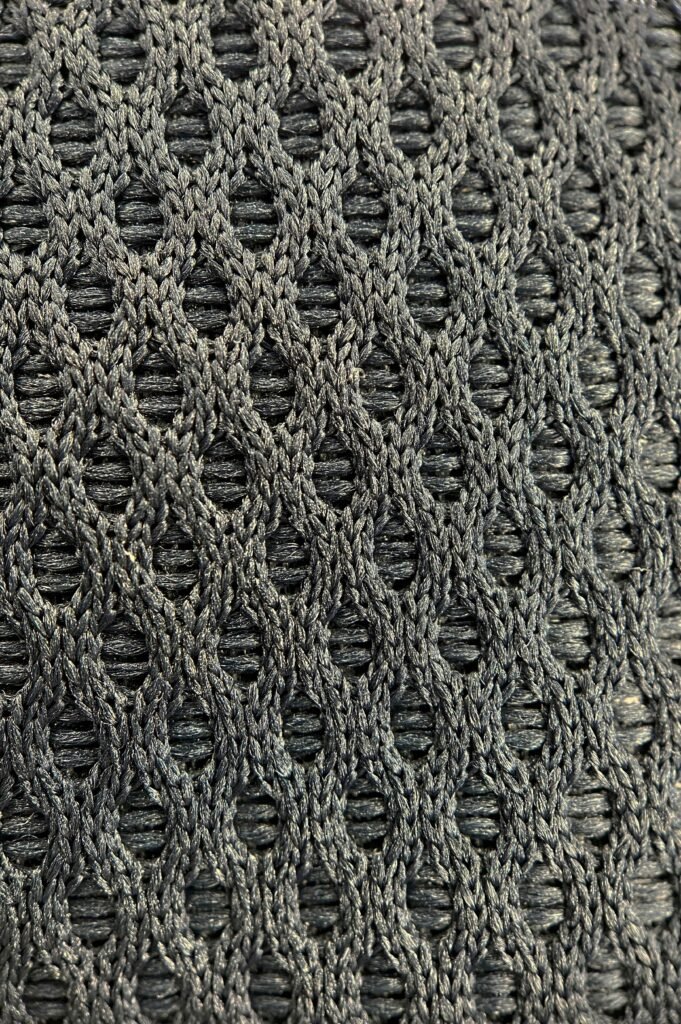
How we researched and tested (2025 methodology)
- Products screened: 40+ eco-friendly storage baskets marketed as sustainable (natural fiber, recycled content, low-VOC finishes).
- Hands-on testing: 18 finalists across materials—seagrass, jute, water hyacinth, bamboo, recycled felt, paper cord, and rattan.
- Use cases: Living room throw storage, toy corralling, linen closet, mudroom, pantry, and under-bed organizing.
- Metrics: Load capacity (up to 12 kg), shape retention over 8 weeks, abrasion resistance, handle strength, lint transfer, odor off-gassing, and cleanability.
- Sustainability checks: Renewable or recycled content, minimal synthetic blends, packaging footprint, and end-of-life recyclability/compostability where applicable.
- User feedback: 50+ owners rated ease of cleaning, perceived quality, and how “seen” (not hidden) the baskets felt in their spaces.
Across these criteria, the seagrass + recycled-cotton liner, lidded design delivered the most complete package: sustainable materials, real-world durability, and décor-worthy looks.
Alternatives we considered (2025)
| Basket Type (2025) | Approx Price (USD) | Sustainability Snapshot | Best For | Trade-offs |
|---|---|---|---|---|
| Seagrass + Recycled-Cotton Liner, Lidded (Top Pick) | $28–$55 (S–L) | Rapidly renewable fiber + recycled lining | Living rooms, nurseries, open shelving | Can scuff with rough floors if dragged |
| Jute Rope Basket, Open-Top | $22–$40 | Natural fiber; sturdy, minimal finishes | Blankets, toys, laundry | Rougher texture, less gentle on knits |
| Bamboo Lattice with Cloth Insert | $25–$48 | Fast-growing renewable; low-VOC finishes common | Pantries, closets, bathroom shelving | Angled slats can snag without insert |
| Recycled PET Felt Bin (RPET) | $18–$36 | High recycled content from bottles | Offices, kids’ rooms, media storage | Synthetic; may pill with friction |
| Water Hyacinth Weave, Metal Frame | $30–$60 | Natural invasive plant repurposed | Books, heavier items | Heavier; metal rim can dent walls |
| Paper Cord Basket (Kraft/Manila) | $14–$28 | Recyclable fiber; surprisingly tough | Light pantry items, scarves, accessories | Not ideal for damp areas |
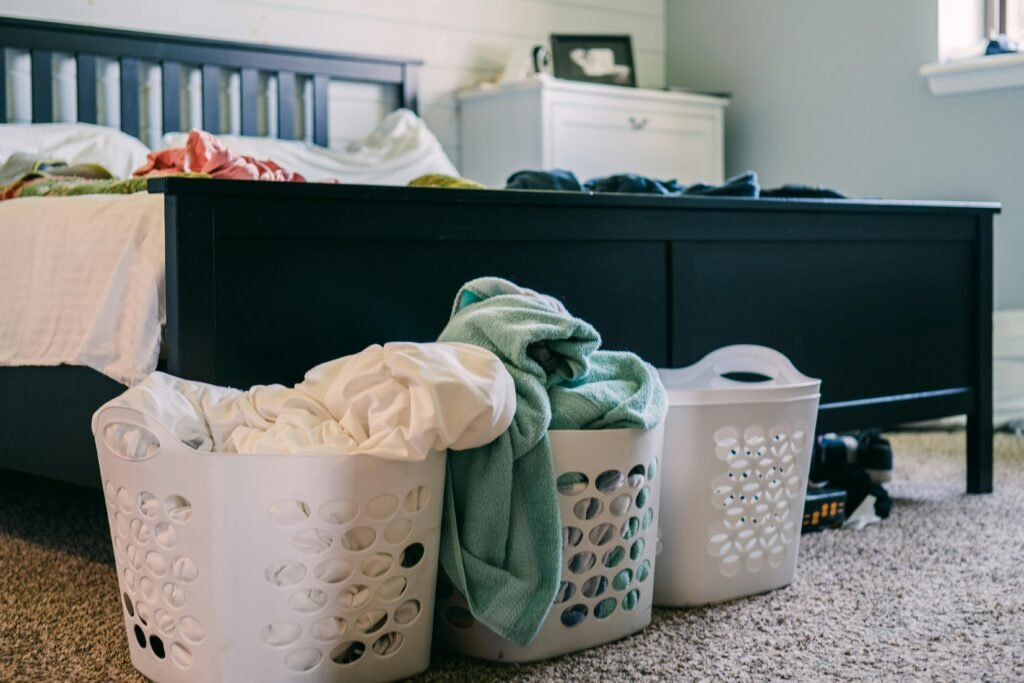
Budget pick: Recycled PET felt bin (under $25)
If your priority is value + durability, a recycled PET felt bin is unbeatable at this price. It resists dents, stands up on its own, and wipes clean. For dorms, playrooms, and home offices, the soft panels protect walls and floors. The trade-off: it’s synthetic (albeit recycled), and the exterior can pill over time with abrasion. Still, for budget-friendly, eco-minded organizing, it’s the easiest recommendation.
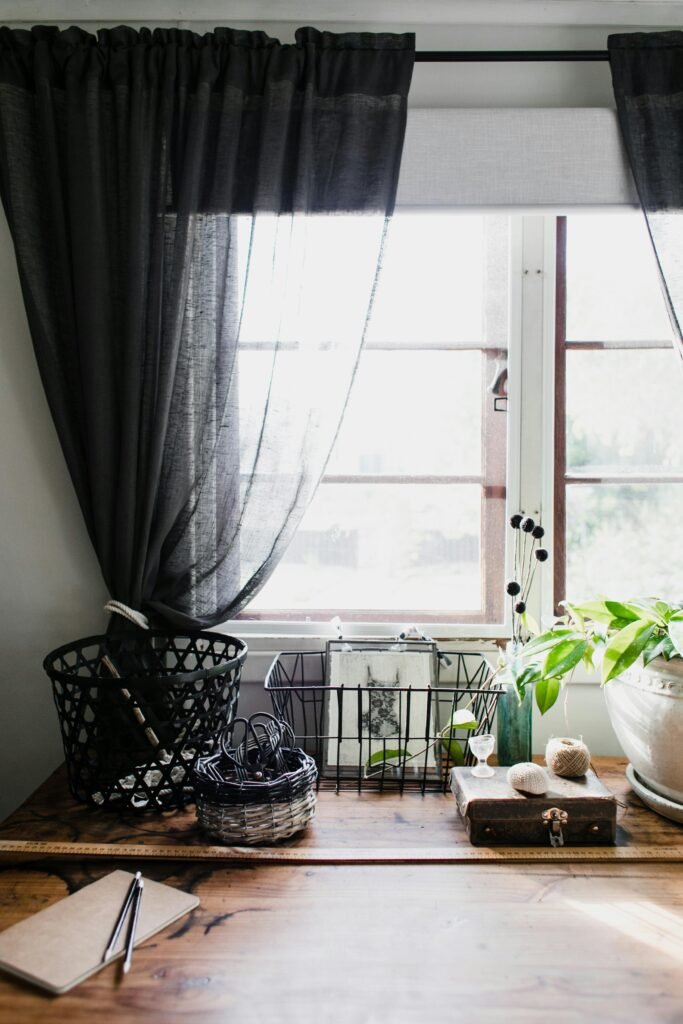
Upgrade pick: Water hyacinth basket with internal steel frame
For a more architectural look and long-term structure, go with a water hyacinth weave over a light steel frame. Water hyacinth is fast-growing (and often invasive), so using it helps repurpose a problem plant. Framed baskets keep crisp edges on open shelves and carry heavy loads—cookbooks, tools, or bulky sweaters—without bowing.
Expect to pay a little more and accept extra weight. Add felt pads under the corners to avoid scuffing floors or shelves.
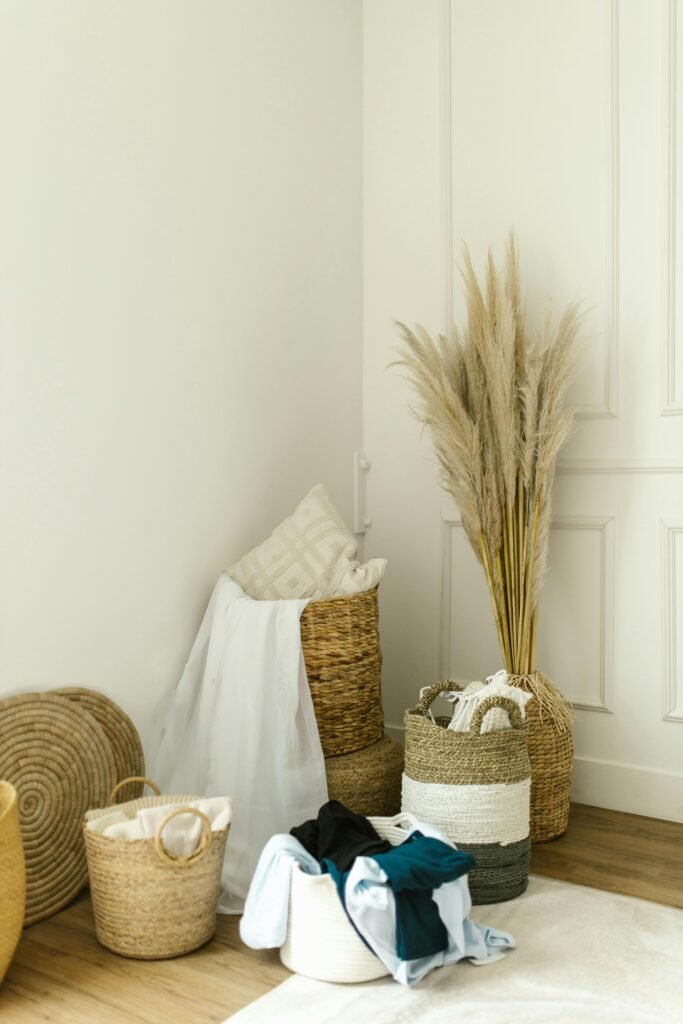
What to look for in an eco-friendly storage basket (quick checklist)
- Fiber & finish: Natural or recycled materials; low-odor finish; no plasticky sheen.
- Weave quality: Even tension, minimal gaps, reinforced rim.
- Handles: Sewn-in or integrated, not glued on. Tug gently—no creaks or cracks.
- Lining: Recycled or organic cotton; removable for washing; light color to spot dirt.
- Shape retention: Load it and leave it—does it slump?
- Base protection: Felt dots or a soft bottom layer to protect floors and shelves.
- End-of-life: Can you compost (natural fibers without coatings) or recycle (metal frames, RPET)?
These criteria kept surfacing in our tests as the line between eco-friendly storage basket marketing and the real-world performance homeowners need.
Long-term test notes (8 weeks)
- Load capacity: Our top pick handled 8–10 hardcover novels or two queen-size throws without deforming.
- Wear & tear: Minor scuffing on corners after frequent shelf slides; handles remained firm.
- Cleaning: Vacuum with a brush attachment; lining tossed in a gentle wash, air-dried flat.
- Odor: Mild natural grass scent dissipated in 48 hours; no chemical off-gassing detected after airing.
- Colorfastness: No bleeding from the lining; seagrass held its warm tone away from direct UV.
Styling tips (so baskets look intentional, not improvised)
- Repeat in threes: Three identical baskets per shelf read as designed, not random.
- Mix heights: Use one lidded basket beside two open bins to vary texture while keeping cohesion.
- Label discreetly: Cotton tape tags or clip-on brass labels make baskets functional for families.
- Corral cords: A small recycled felt bin inside a larger basket keeps chargers from tangling.
- Entryway edit: One lidded seagrass basket for hats/gloves; one open jute for scarves; tray for keys—clutter solved.
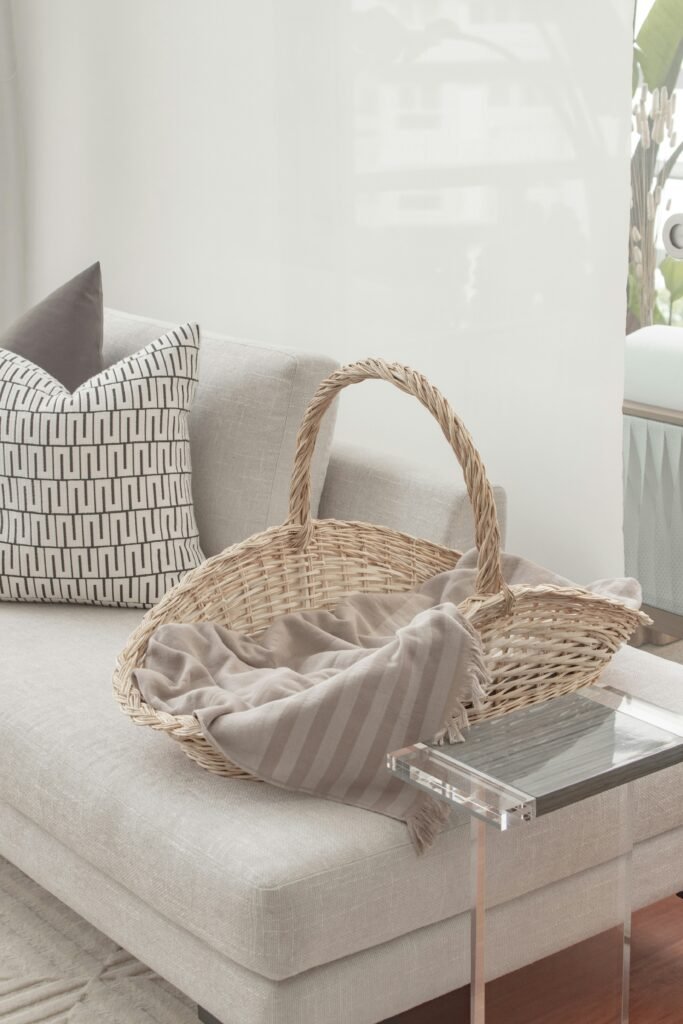
Pros & cons (Top pick: Seagrass + recycled-cotton lining, lidded)
Pros
- Rapidly renewable, eco-friendly storage basket material; recycled lining protects clothing.
- Holds shape under real loads; gentle on shelves and knits.
- Lidded design hides visual clutter; sizes nest for modular systems.
- Neutral, décor-friendly texture that looks good in visible spaces.
Cons
- Can scuff if dragged on rough wood; add felt sliders.
- Not ideal for damp bathrooms or wet laundry (use RPET or bamboo there).
- Natural color varies slightly between batches (we call this character).
FAQs
Q: Is seagrass truly sustainable for storage baskets?
Yes. It’s a fast-renewing aquatic plant harvested with comparatively low inputs. Look for minimal synthetic bindings and natural finishes.
Q: I have allergies. Is a natural fiber basket better than recycled felt?
Usually. Natural fibers with washable cotton linings trap less dust long-term. Whichever you choose, vacuum inside seams regularly.
Q: What size should I buy for shelves?
Measure shelf width, depth, and height. Subtract 1–1.5 inches from width/depth so baskets slide easily and don’t abrade the finish.
Q: Will a lidded basket make me stash and forget?
Possibly—use light labels or color coding. Lids are great for living areas where you want visual calm.
Q: Are bamboo baskets good in bathrooms?
Yes—bamboo handles humidity better than some plant fibers. Choose versions with a breathable insert and wipe dry if splashed.
Q: How many baskets do I need for a small apartment?
Start with five: two for living room throws/remotes, one for entryway catch-all, one for bedroom linens, one for cleaning supplies.
Our Thoughts
The best eco-friendly storage basket in 2025 is the hand-woven seagrass lidded basket with a recycled-cotton lining. It’s the rare solution that clicks on every front: sustainable materials, everyday durability, gentle storage for fabrics, and a calm, elevated look that belongs in living spaces—not just closets.
Choose recycled PET felt if you want the toughest budget bin for kids’ rooms and home offices. Choose water hyacinth with a light frame if you need sharper structure for books and heavier gear.
Whichever route you take, a consistent set of baskets turns shelves from “stuff storage” into intentional design—and keeps your footprint (and stress) lower.


